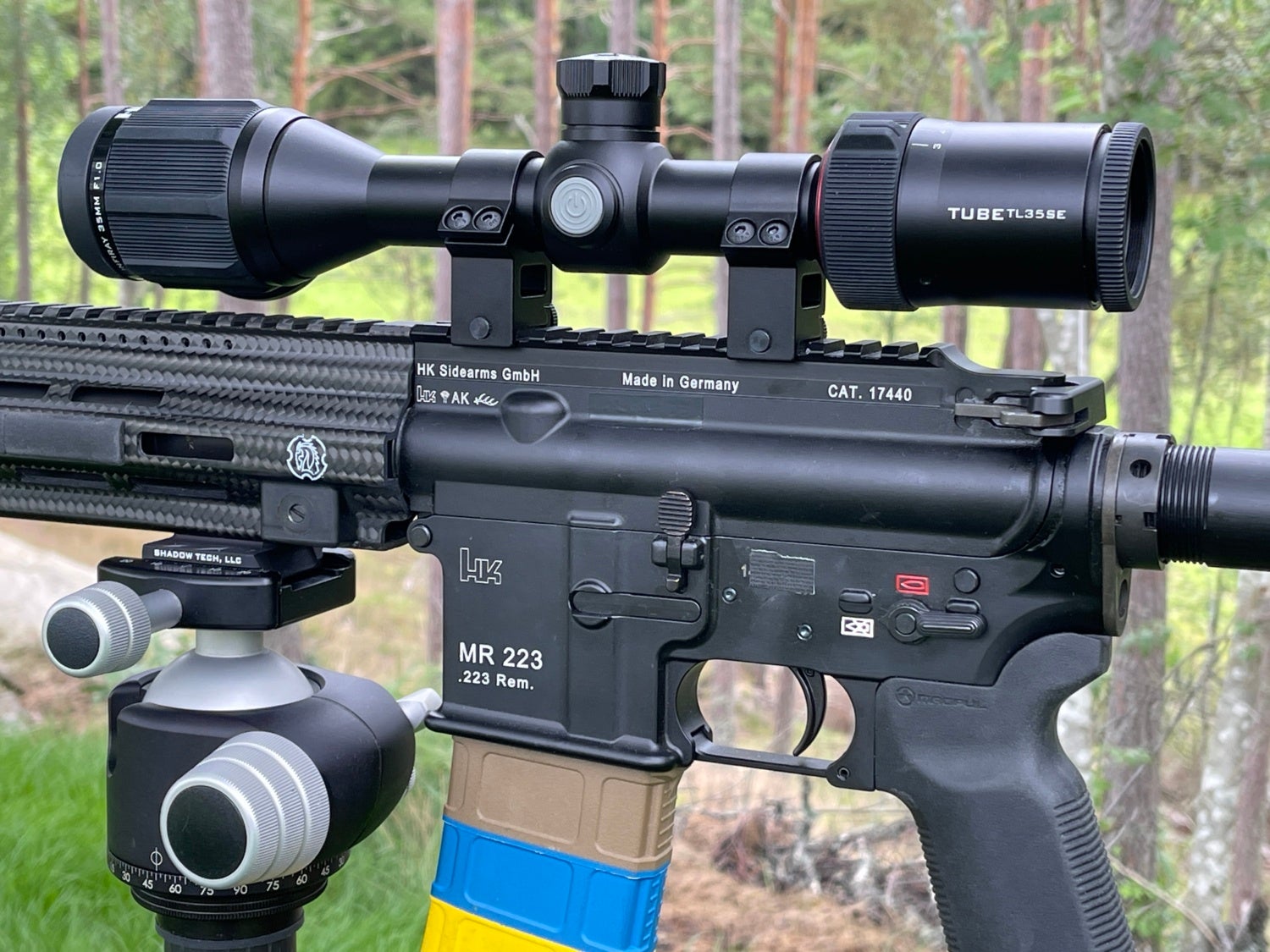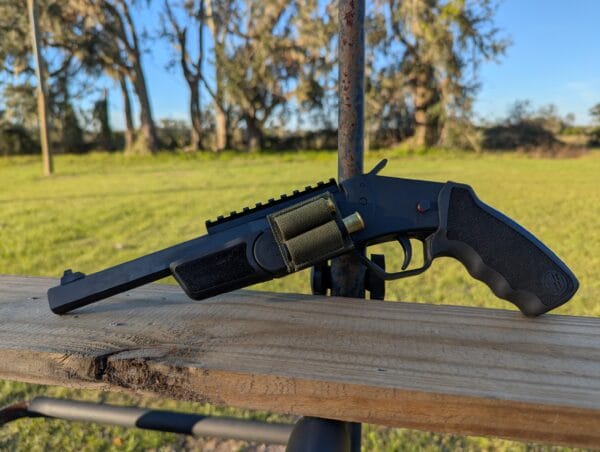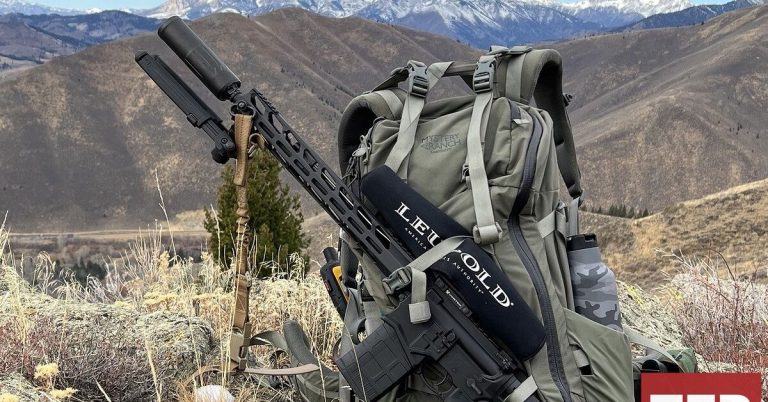This is a review of the Infiray Outdoor Tube/Bolt TL35 SE Thermal Riflescope. While thermals aren’t exactly cheap, the luxury has become a lot more affordable in the past few years. This model is one of those that will probably show up on your radar if you’re looking for a budget thermal riflescope. Read on to learn more about it.
Infiray Outdoor @ TFB:
Apart from this Tube/Bolt TL35 SE, we also have a review of the Zoom ZH50 V2 Dual FOV Thermal Monocular and their Mate MAH50 clip-on thermal imager on the site already, or upcoming – all from Infiray Outdoor.
Introduction
For the past few months, I’ve been reviewing the Infiray Outdoor Tube/Bolt TL35 SE Thermal Riflescope. I first saw this device at the IWA exhibition this spring and was struck by how slim and compact it was with its 1” tube. The weight is 750 grams, relatively light. The thermal performance wasn’t bad either, at least not indoors, so after a few months, I had one in my hand, ready for the review you’re now reading.
First of all, I had to get some mounts for the 1” tube. It’s been a while (read: never) since I’ve had a 1? tube to review. Unfortunately, Spuhr was out of stock, so I’ve been using the ones that were included in the original box from Infiray Outdoor. They work, but I have my doubts about how they would hold up over time. I recommend that you get some quality rings, over the ones provided.
Below: The Heckler & Koch MR223 with the Infiray Outdoor Tube TL35 SE. On the US market, the thermal is called Bolt instead of Tube. And the H&K is called MR556…
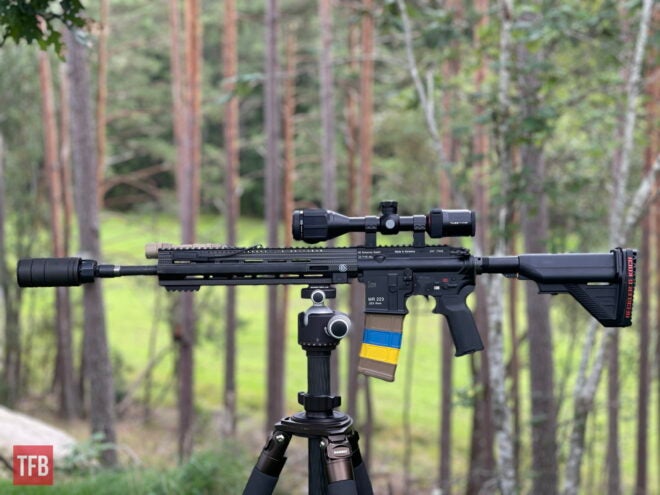
Technical Specifications
The thermal sensor of the Tube/Bolt TL35 SE thermal riflescope is an uncooled Vox 384×288 pixels, 12?m, and a NETD value ? 25mK. The base magnification is 3x and goes up to 9x. The screen is an OLED with 1536×1080 (0.43”) resolution. The IP Rating is IP67, so it’s probably prepared for more mud and humidity than yourself.
The weight is 750 grams. which is quite low for a thermal riflescope. The dimensions are 310x70x70 mm. The manual says that “compatible mounts” are 30mm rings, but the riflescope I have is definitely 1? (25.4 mm) and nothing else.
All of the Tube/Bolt SE series come with a 32GB built-in memory space, to be used for photos or video recording. The photo and video files will be named by time, so I advise you to enter this into the system when you get yours. There is also support for an external laser rangefinder, but this was not provided and therefore not reviewed.
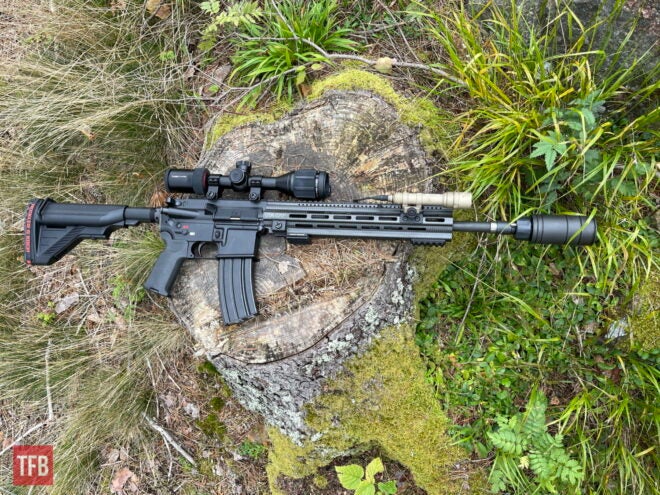
In terms of ergonomics; the control wheel on the tower (turn) is perfect, and switches between color modes, or goes up or down in the menu settings. It’s therefore a bit of a downer that the “enter” button (push down) on top of the same tower certainly could have a more distinct feel, especially in the release. You’re not always sure if the device got your command or not. But overall this is a good user interface.
Batteries and Power
According to the specs, there’s an internal 18650 battery with 3350 mAh, with battery power for up to 11 hours of normal operating time. I cannot say that this thermal had a larger appetite for energy than any other I’ve reviewed over the years.
Below: Looking into the ocular.
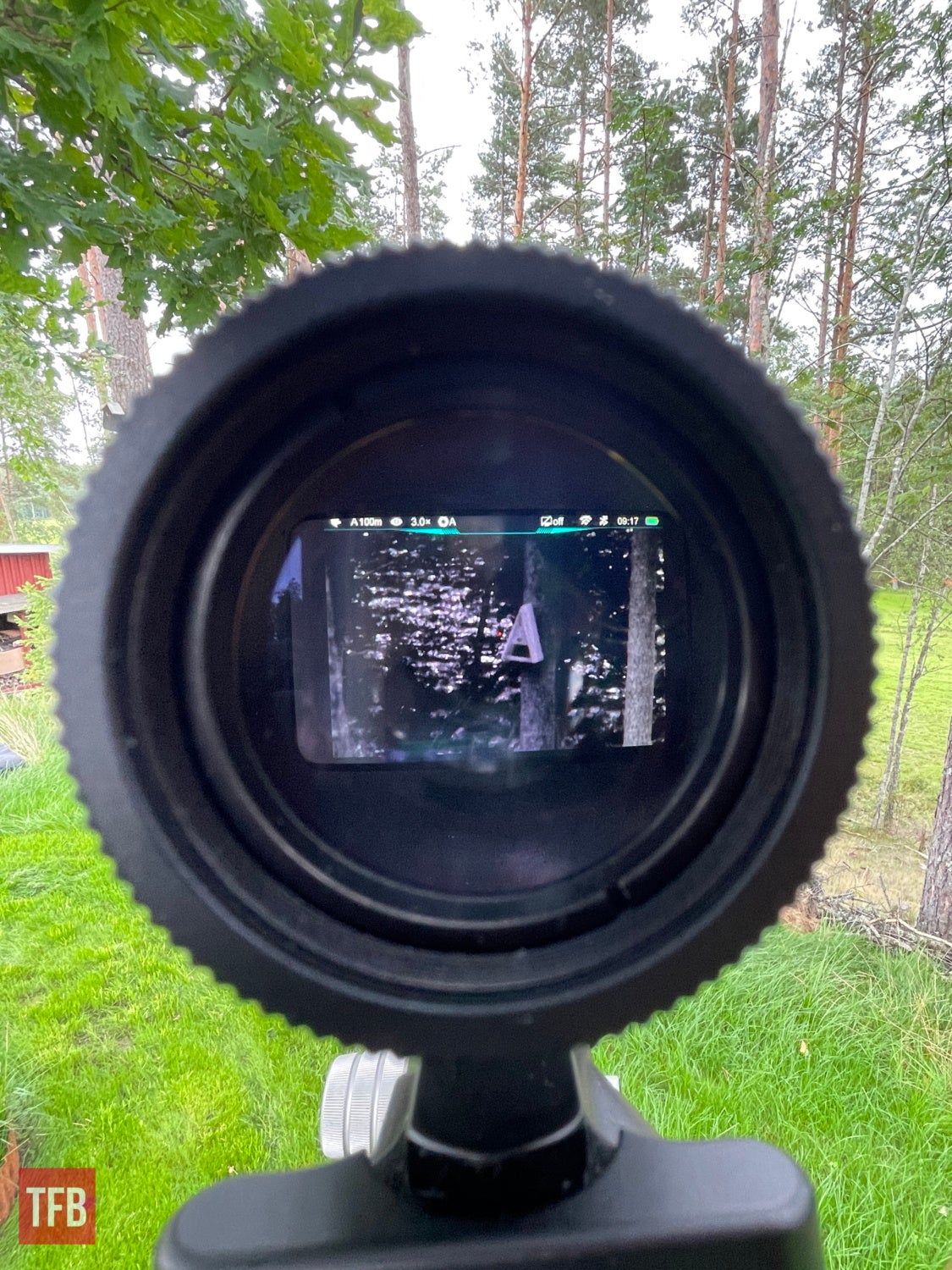
The suppressor is made by SAI in Denmark and fits any A2 flash hider with a QD.
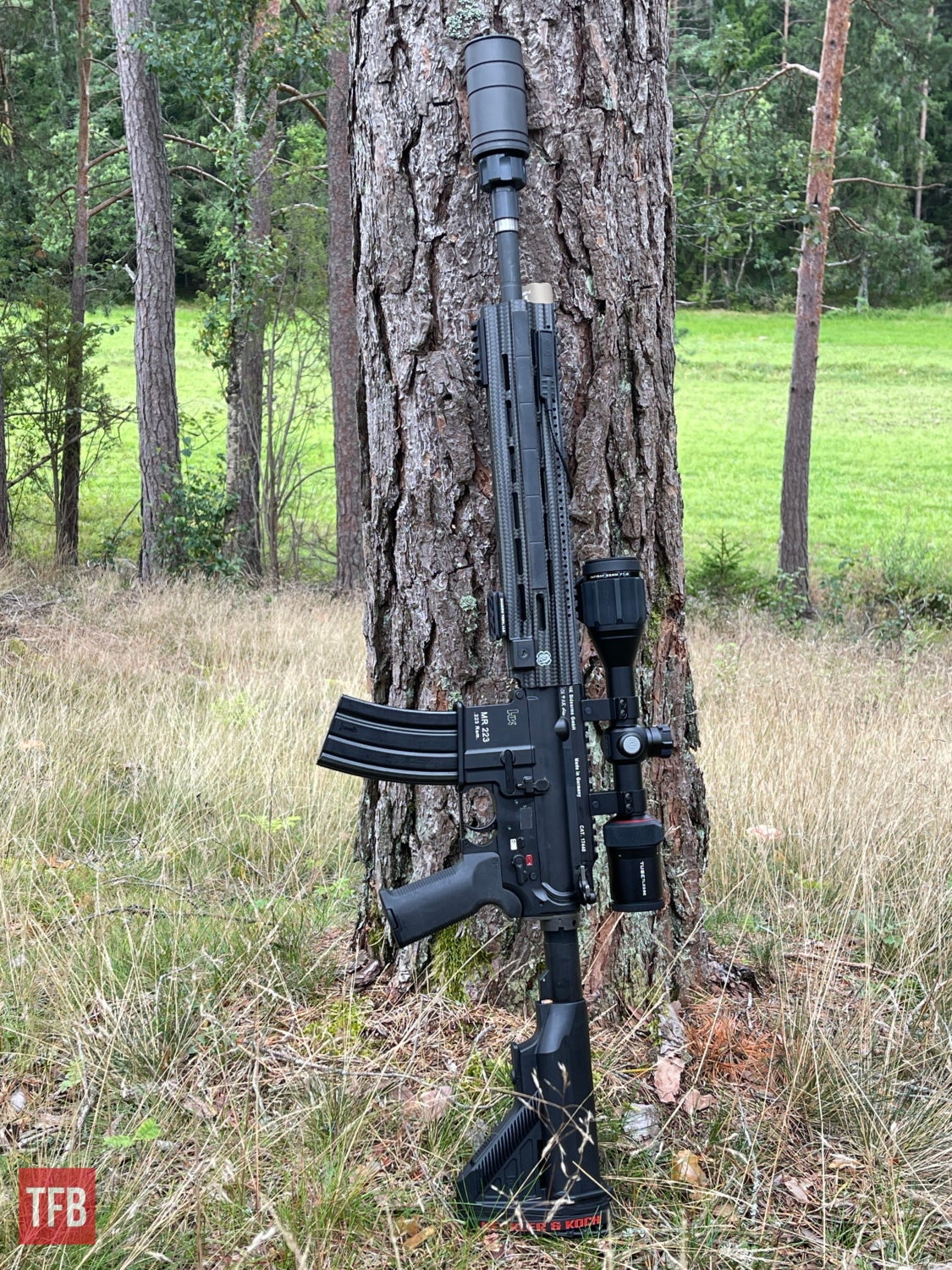
The Infiray Outdoors Tube blends in rather nicely on the HK.
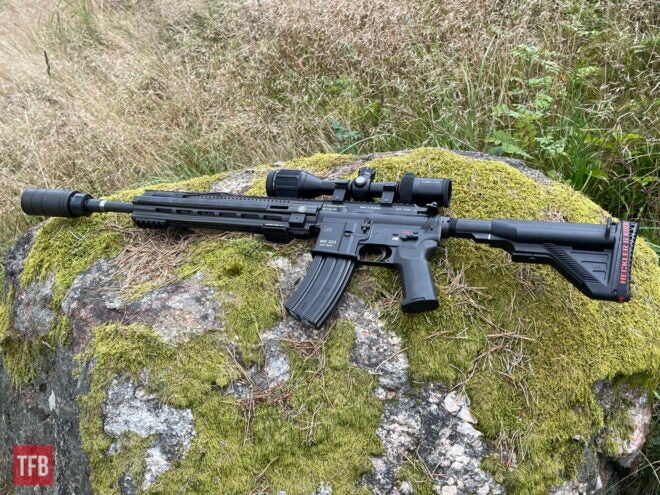
Image Quality – Sample Images
Once you’ve looked into a high-quality thermal riflescope, like the InfiRay Tube TH50 Thermal Imaging Riflescope, it’s difficult to go back. It’s easy to become a “thermal snob”, especially if you have a lot of high-end benchmarks lying around to compare with the budget ones. This is no different, but then you look at your budget and realize what you have to relate to.
Note that some of these images are taken during fairly optimal conditions, including sunlight and close range in a wildlife park.
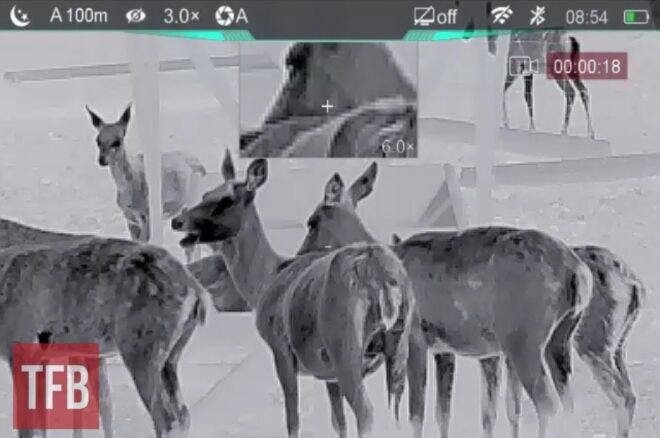
The moose bull, at very close range. 3x minimum is “almost” too much here. I usually say “who dares wins”, when it comes to filling up the ocular with a wild animal!
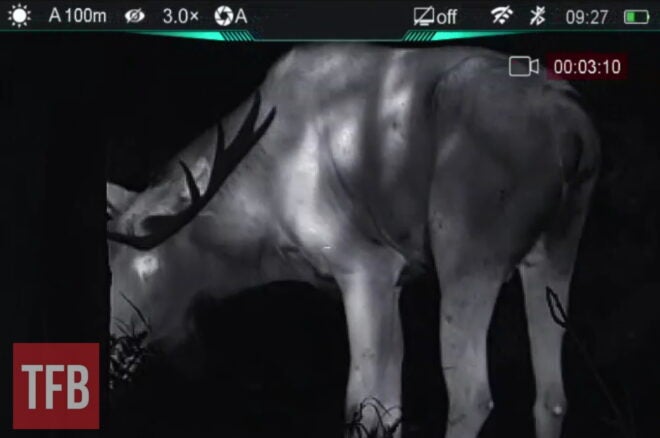
Changing the focus is done at the front of the scope. There’s a big, rubberized ring to turn around to adjust for the ideal image. The only criticism is that the whole turn is 3/4 and that the friction is just a little too hard, especially at the endpoints. Is it a deal breaker? Certainly not, but I’m here to point some of these things out for you, as well as the manufacturer, for their next generation.
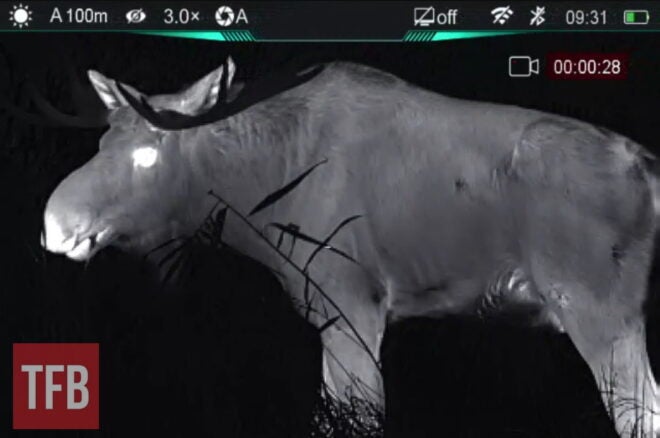
Here we have a field, surrounded by a forest (as well as the backstop). These fallow deer are at about 270 to 300 meters distance. In my opinion, this is way too far to do any shooting. There’s a bunch of reticles and colors to choose from.
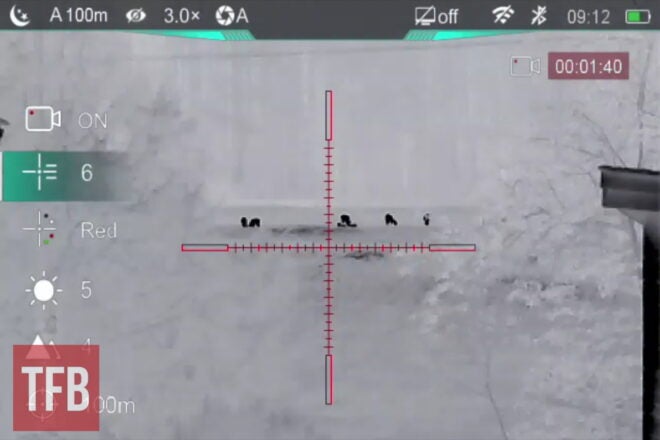
A field with a mixture of fallow deer and red deer. As they lay down in the grass, it’s really difficult to recognize what is what – or if it’s a hare? Also, note that it’s always more difficult to identify animals in still images like this, as only some of their movement patterns will reveal their identity.
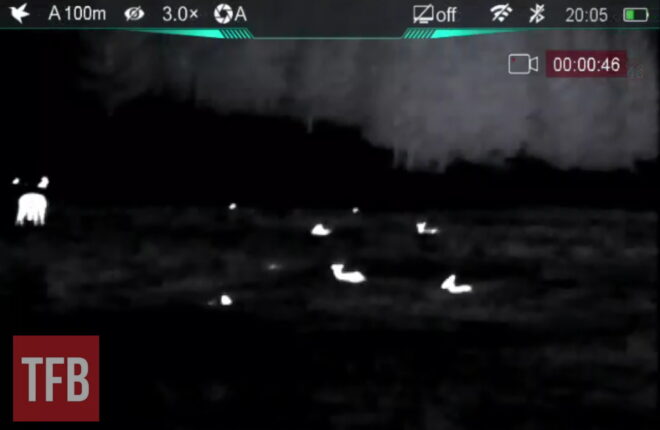
Here we are at 100 yards, zeroing the Tube thermal. You can barely make out the numbers 1, 2…4…6…etc. You can however see the target paper, with a moose on it, and two squares for zeroing. At the time of taking this image, the heat source I used for zeroing wasn’t strong enough to show.
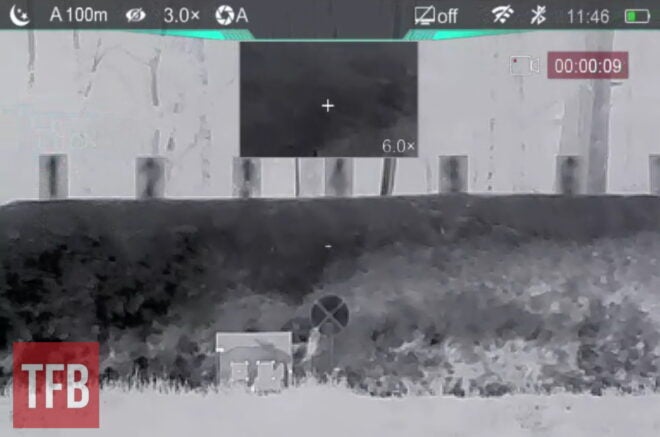
With Infiray’s algorithms you usually get a kind of moirée effect, just look at the sandy backstop of this shooting range in black and white hot. I’m not saying this is good or bad, it’s just part of the package.
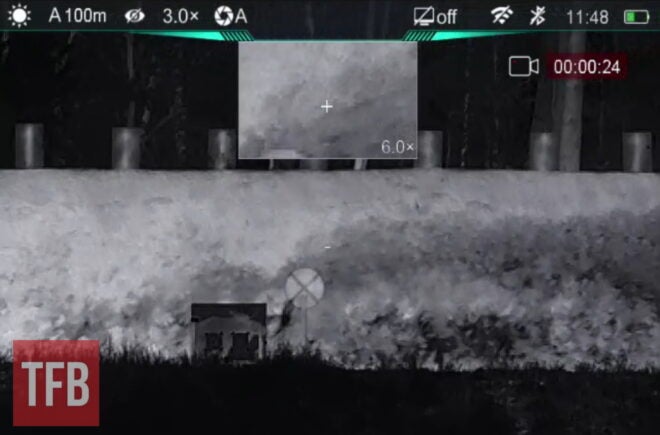
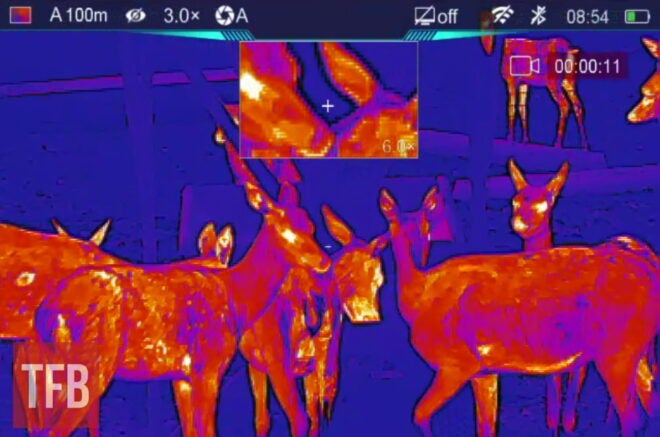
I’m not a big fan of this color (above), but in some cases, it’s not that bad once you get past the LSD hallucination effect (not that I would know!). But it certainly beats the red-hot setting in a lot of cases.
I’ve seen a few thermals in the past few years, and I subjectively don’t think this device runs at ? 25mK NETD, looking at how the algorithms slice the temperature differences. Or something else is going on, that I can’t explain.
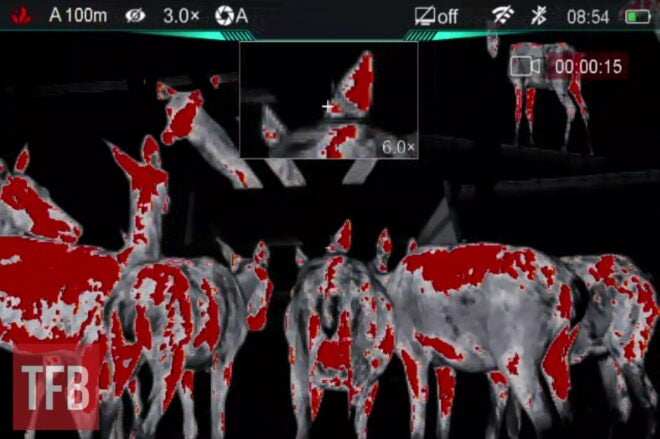
Video
As always, we try to provide a video (a very short one this time) so you know what to expect. This is from a windy day, daytime, with some sun and clouds and a temperature of around +10C. It’s recorded in a wildlife park at a close distance.
Price and availability
The Infiray Outdoor Tube/Bolt TL35 SE Thermal Riflescope is Made in China and seems to cost around 2,500 EUR/USD.
Conclusion
Just like with any other optic, the optical performance is what we’re after. And we want as much image as possible, as cheap as possible – except that’s a contradiction regardless if we’re talking analog or digital scopes. This thermal riflescope gives you an entry-level introduction to what to expect, in a very slim package. There are possibilities, but also limitations.
The Tube/Bolt TL35 SE has some great features, and it’s very compact. For instance, the traditional magnification handle, which is rubberized and has a small cat tail for an even better grip.
Pros
- Size, weight and ergonomics. Minimalistic design, without ergonomic trade-offs.
- The rubberized magnification ring is really good, with nice clicks. Others take note.
- The control wheel on the tower (turn) is perfect, and switches between color modes (or goes up or down in the menu) with a glance.
- Easy to use.
Cons
- You can only squeeze out so much of a 384×288 pixels thermal sensor. Don’t expect too much. There’s a reason some thermals are twice as expensive.
- It doesn’t look like a NETD value ? 25mK device.
- The focus ring has a very long travel.
- The “enter” button (push down), on top of the tower could have a more distinct feel.
- Internal battery only – but I guess they built the tube around the battery to keep it slim.
- I would not use the rings that come with the scope (1? rings)
You can find the product page here: https://www.infirayoutdoor.com/thermal-imaging-riflescope-tube-se







